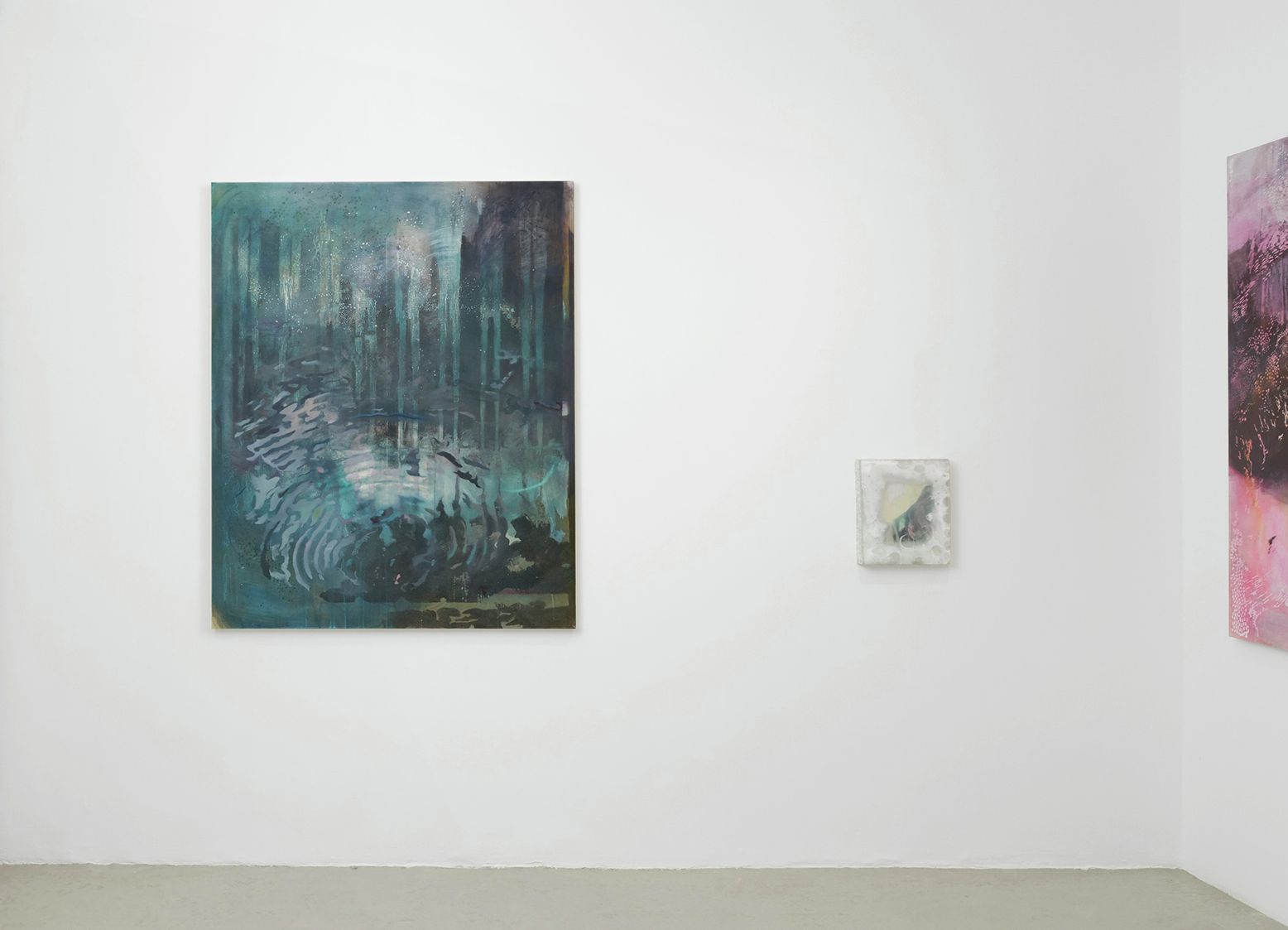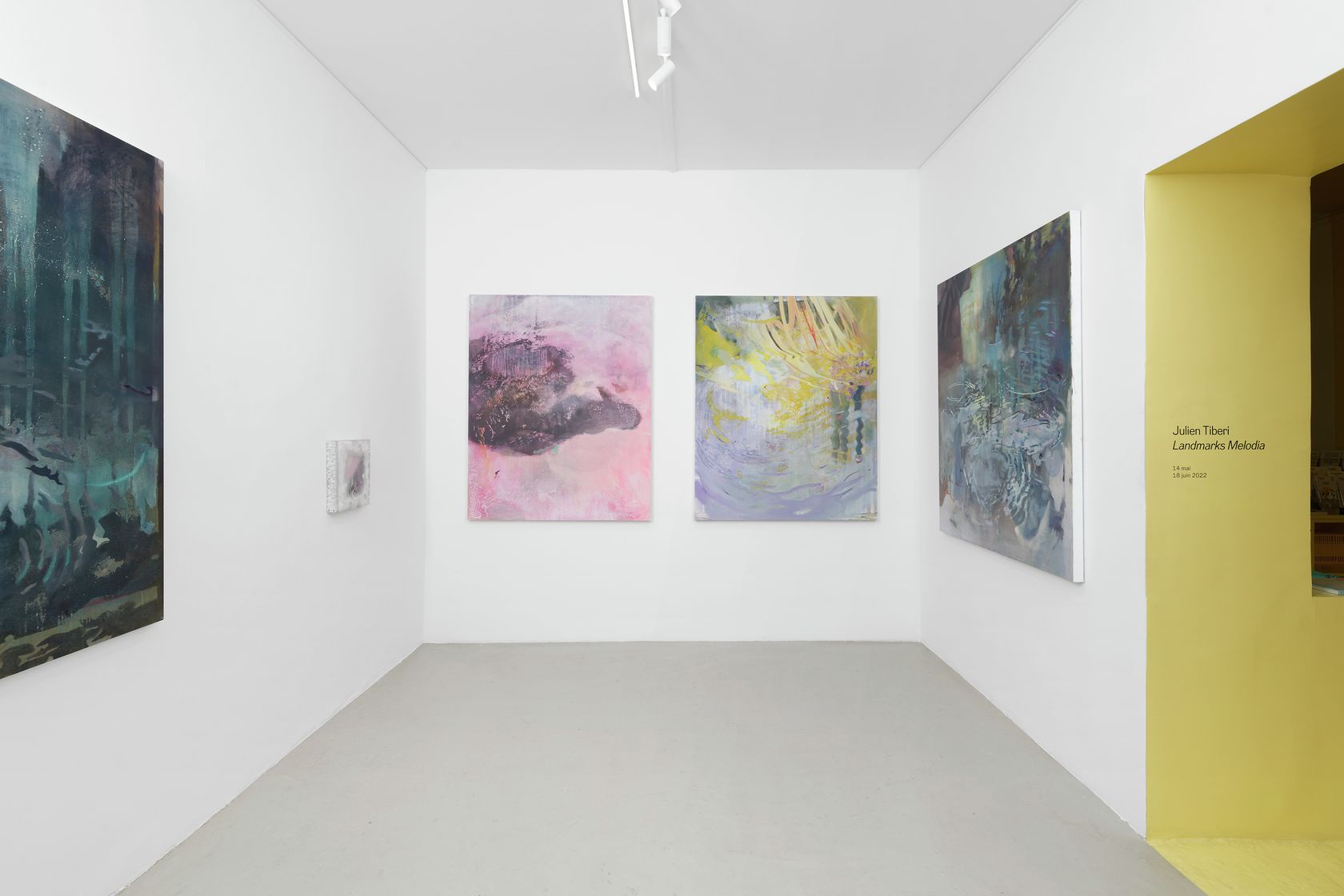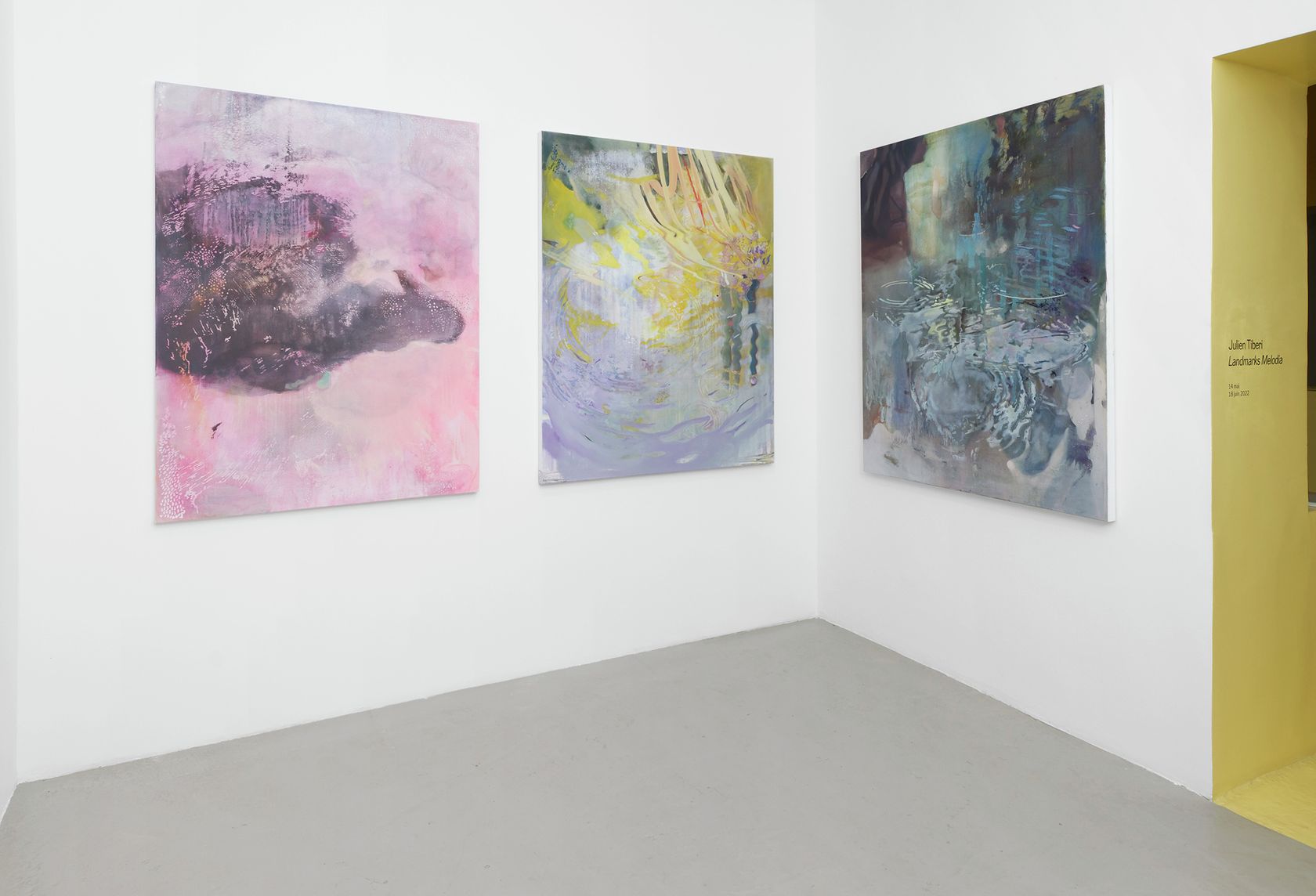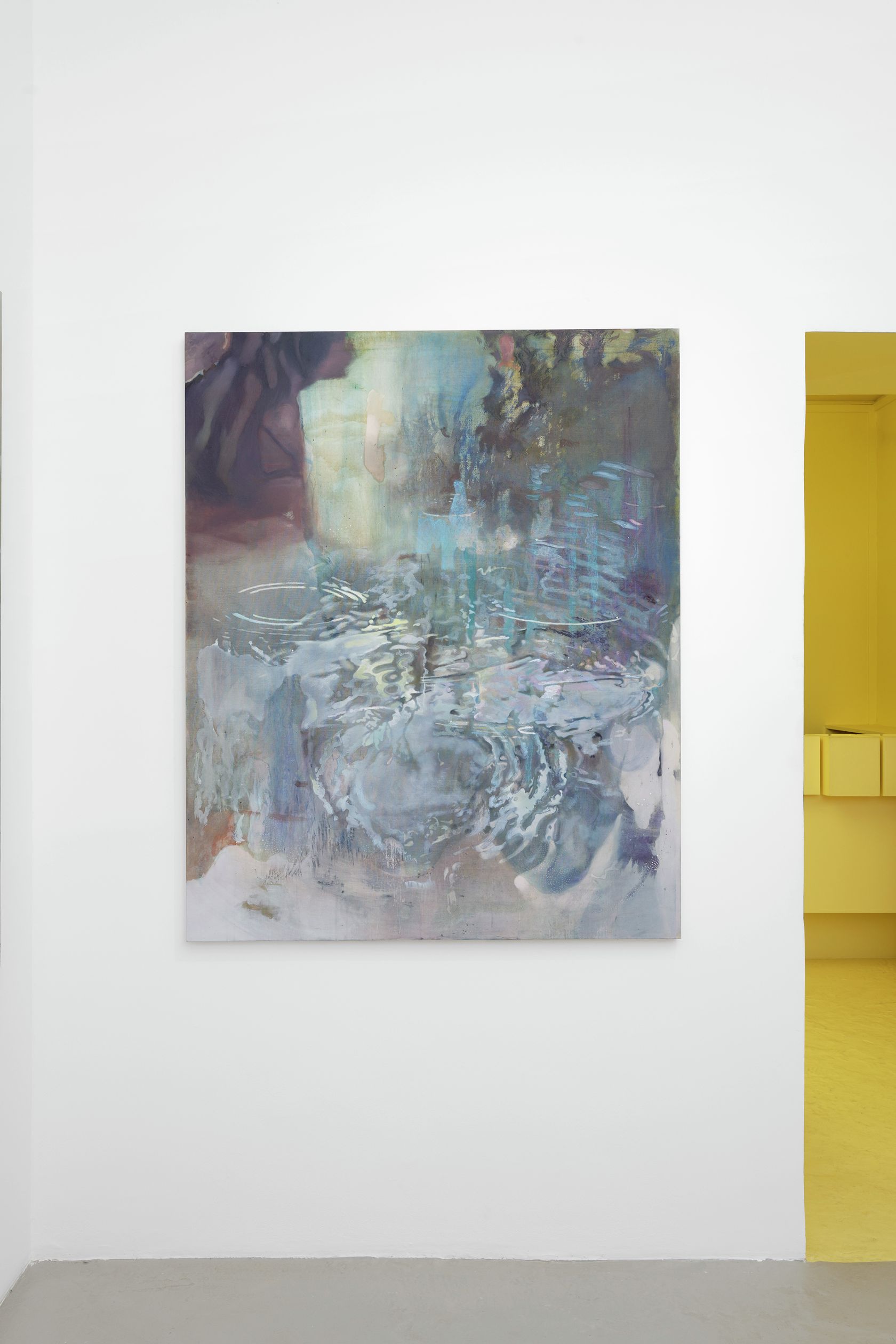-
 1/4
1/4
Julien Tiberi, Landmarks Melodia
-
 2/4
2/4
Julien Tiberi, Landmarks Melodia
-
 3/4
3/4
Julien Tiberi, Landmarks Melodia
-
 4/4
4/4
Julien Tiberi, Landmarks Melodia
Drawing with a brush-pen, losing himself in a succession of rapid, regular and rhythmic strokes, Julien Tiberi contemplates the black mass, gazing through it in order to “hallucinate the image”. He advances blindly in this process of “slow spinning” always in reaction to the dot he has just placed, “respecting and following the indications it gives” in order to establish the following mark. This constellation of dots serves to give rise to something as yet unknown: “the drawing designates the space occupied by the other while respecting its structure” the artist explains. He allows forms to appear to him—a process that can take some time and is occasionally unsuccessful—even though one cannot entirely rule out the idea of a certain subjectivity in this interpretive act, which is reminiscent of klecksography and other forms of pareidolia. Then comes the transition into color, which once again is all about countering what came before.
Furthermore, the image is a focal point for various antagonistic elements, as is the case with the painting Phà! Phà! (2019-2020), a source-work of this exhibition. While the artist was working on a number of paintings at the same time, moving from one to the next without dwelling on them individually, he suddenly heard the sound of a frog croaking in a pond near his studio. “Going for the most viscous”, he grabbed a tube of oil paint in order to depict the sound of the frog in the form of waves in the center of his composition: the croaking had thus contaminated the canvas. This is one example of the strategy of distraction adopted by Julien Tiberi, of his sense of derivation through form, his taste for the unexpected and his desire to go against the flow and towards unfamiliar things, bringing them together and attesting to their existence.
Julien Tiberi’s volubility is an expression of this constant deviation of thought, where one idea affects another, or is grasped with extreme rapidity and where the only pathway through the fundamental diversity, both visible and invisible, of the world, is a meandering one. Whether in terms of drawing, painting or installation, the artist considers that “making images, is to see things being born”. He is particularly attached to the animatory power of drawing, which he defines as metamorphosis, transfiguration and transgression—he cites the film director Sergei Eisenstein and his concept of “plasmaticity”.
Unlike his “blurred” works, which were systematic in nature, in this case the artist painted without any idea of the result he would achieve and without mastering the techniques he used. The canvas is first splashed with liquid acrylic colors, then worked on mainly using a sponge. Once the artist “finds the right note”—i.e. when the moistened canvas becomes taught as it begins to dry out, and when tapped, produces a sound like a percussion instrument—he begins to stipple the surface, in an improvised yet controlled manner, with drawing gum—that he will eventually remove as usual – then reworks the whole canvas with oil paint or pastels, creating motifs from the outside, creating their outlines from the clues he has sown. He sees the canvas like “a theatre stage where one is constantly rehearsing”: he experiments, makes mistakes, gets stuck, explores, gets lost, amuses himself and all his meanderings (physical, mental, sensory and material) become the protagonists of his creation.
Laurence Schmidlin
Laurence Schmidlin holds a doctorate in humanities from the University of Geneva and is an art historian specializing in drawing and printmaking. She has worked in collaboration with numerous museums and art centers in Switzerland and abroad and in 2012 co-founded the exhibition space and research center Rosa Brux in Brussels. Since 2017, she has been the curator of contemporary art at the Musée Cantonal des Beaux-arts de Lausanne, after having occupied the position of deputy director at the Musée Jenisch Vevey and curator at the Cabinet Cantonal des Estampes (2013-2017). A book based on her doctoral thesis, La Spatialisation du dessin dans l’art américain des années 1960 et 1970, was published by Presses du Réel in 2019. In July 2022, she will become the director of the Musée d’Art du Valais in Sion, Switzerland.